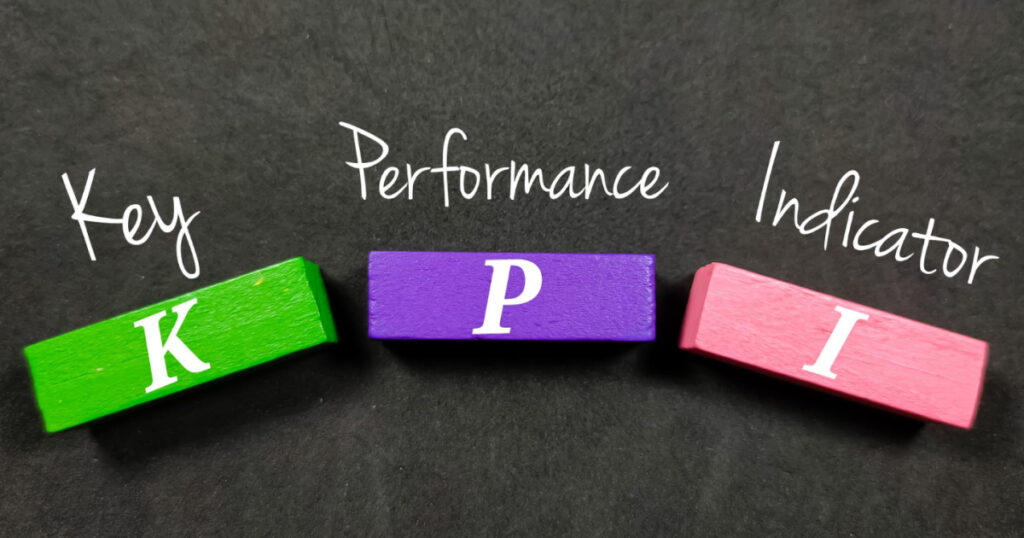It’s 2023, and the digital hype is only growing further.
With over 5 billion users online, making the most out of your digital marketing efforts has become ever so crucial!
Though the number of users visiting your website is important, if they’re just browsing and bouncing back in a few minutes, are you really gaining loyal customers? And how can you ensure you’re getting successful leads and conversions?
Welcome to the world of metrics mastery—where we decode the secret language of business success!
If you’ve ever wondered how to turn data into a startup’s secret weapon, you’re in for a treat. Imagine your startup is like a rocket ready to launch, and these three acronyms—Churn, MAU, and VAU—are your navigational stars.
We’re not talking about rocket science, but it’s close—this is your roadmap to marketing magnificence!
In this journey through the alphabet soup of business analytics, we’ll demystify the power of measuring Churn, Monthly Active Users (MAU), and the lesser-known but equally crucial Weekly Active Users (VAU).
But before we blast off, let’s address the question: what is a growth marketer?
A growth marketer is a data-driven marketing whiz who uses their analytical superpowers to fuel a startup’s user base and keep those conversions climbing. They’re the masterminds behind those irresistible campaigns that turn website visitors into loyal brand advocates.
No jargon jungle here—just practical insights tailored for you.
Overview of Key Performance Indicators (KPIs) in Marketing

In the dynamic marketing world, Key Performance Indicators (KPIs), like customer lifetime value, serve as compass points. And what is a growth marketer? Someone who is guided through the vast landscape of strategies and campaigns.
These metrics provide invaluable insights into the effectiveness of various initiatives, helping marketers make informed decisions and optimize their efforts.
KPIs are measurable values that reflect the performance of a marketing campaign or strategy.
They go beyond mere numbers, acting as the pulse of your efforts and shedding light on what’s working and needs adjustment.
Among the myriad KPIs, three are significant in modern marketing: Churn, Monthly Active Users (MAU), and Value-Added Users (VAU).
Importance of Churn, MAU, and VAU in Modern Marketing

Churn – Retaining the Gold in Your Customer Base
Churn, or customer attrition, is a critical KPI that measures the rate at which customers disengage or unsubscribe from your services.
According to recent stats, the subscription economy is projected to grow to $1.5 trillion by 2025.
What is a growth marketer in this context? Someone who must apply customer centric marketing to plug the leaks in a ship – retaining the valuable cargo (customers).
High churn rates can indicate issues with product satisfaction, negative customer feedback, poor service, or market changes.
By keeping a close eye on churn, a growth marketer can proactively address these issues and implement strategies to boost customer retention.
Monthly Active Users (MAU) – The Pulse of Engagement
MAU is the heartbeat of your product or service’s popularity. It measures the number of unique users engaging with your offering every month.
In the age of short attention spans and ever-changing consumer preferences, MAU provides a real-time snapshot of your product’s relevance.
A growth marketing agency can leverage MAU to track the impact of marketing campaigns, identify trends, and tailor strategies to enhance user engagement.
After all, a high MAU indicates a healthy and thriving user base.
But how do you get those users in the first place? Here’s where demand generation comes in. It’s the art and science of creating interest in your product or service and driving qualified leads through your marketing funnel.
Growth marketers are the masterminds behind successful demand-generation efforts. They use various channels and strategies to build brand awareness, capture leads, and nurture them into loyal customers.
While there can be some overlap, growth marketing and demand generation aren’t the same.
Demand generation focuses on the initial spark of interest, the activities that get potential customers curious and engaged with your brand. This might involve content marketing, social media campaigns, or targeted advertising.
On the other hand, growth marketing encompasses the entire user lifecycle, from attracting new users to retaining existing ones.
Value-Added Users (VAU) – Going Beyond Numbers
VAU takes the user engagement game to the next level by counting users and measuring the value they bring. It considers factors like the frequency of use, the depth of engagement, and the overall impact on the business.
Growth marketing uses VAU to identify power users and understand what makes them tick.
This deeper understanding enables the creation of personalized campaigns and experiences that resonate with users, fostering loyalty and driving long-term value.
By honing in on these KPIs, marketers can fine-tune their strategies, foster customer loyalty, and steer their campaigns toward success.
Churn Rate

Definition and Significance:
Did you know that more than half of Americans claim their lifetime loyalty to a brand?
That’s why attaining loyal followers is paramount to any business, especially those that are just entering the market.
And the churn metric is the one that lets growth marketers know how well they’re holding onto their customer base.
A low churn rate suggests good customer satisfaction scores and intense loyalty, while a high churn rate might signal underlying issues that need attention.
Types of Churn (Customer vs. Revenue Churn):
Churn isn’t a one-size-fits-all metric. There are different flavors to consider. Customer Churn measures the loss of customers over time, providing insights into user satisfaction and product relevance.
On the other hand, Revenue Churn looks at the loss of revenue due to downgrades or cancellations.
Both metrics are crucial for understanding different aspects of your business’s health. For growth marketers, discerning between the two types of churn helps tailor strategies to address specific challenges.
Monthly Active Users (MAU)

Definition and Relevance:
For growth marketers, MAU is a litmus test for the product’s popularity and ongoing relevance. It’s not just about acquiring users; it’s about keeping them engaged month after month.
A high MAU indicates a thriving user base and successful marketing strategies that resonate with the target audience.
Differentiating from Other User Metrics:
MAU stands out in the crowd of user metrics by focusing on regular engagement over a monthly period.
Unlike Daily Active Users (DAU), which captures the intensity of short-term engagement, MAU offers a more sustainable view of a product’s user base.
While DAU might spike during specific events or promotions, MAU provides a more stable and realistic measure of consistent user interaction.
Understanding these nuances helps marketers craft strategies catering to short-term spikes and long-term engagement goals.
Visiting Active Users (VAU)

Definition and Application:
Visiting Active Users (VAU) takes user engagement a step further by not just counting users but evaluating the depth and value of their interactions.
VAU considers factors such as the frequency of visits, the time spent, and the actions taken within the product.
This metric provides a nuanced understanding of user behavior and the overall impact on the business.
Growth marketers use VAU to identify power users, optimize user experiences, and tailor campaigns that resonate with the most valuable segments of the audience.
Comparing VAU to MAU and DAU:
While MAU captures the overall engagement on a monthly basis and DAU reflects daily intensity, VAU offers a more granular view of the quality of interactions.
It’s about finding the sweet spot between quantity and quality.
For growth marketers, comparing VAU to MAU and DAU helps understand the holistic user journey.
A high VAU indicates a large user base and a significant portion actively deriving value from the product, laying the foundation for sustainable growth.
Measuring KPIs

Calculating Churn Rate
Formula and Examples:
The formula is straightforward:
Churn Rate = (Number of Customers Lost / Total Number of Customers at the Start of the Period) * 100.
Let’s break it down with an example.
If you had 100 customers at the beginning of the month and lost five by the end, your Churn Rate would be (5 / 100) * 100 = 5%.
This simple formula helps growth marketers quantify customer attrition and assess the health of their customer base.
Adjusting for Business Type and Size:
Different business types and sizes may require adjustments to the calculation. For instance, a subscription-based service may consider customer and revenue churn for a more comprehensive view.
Larger enterprises may analyze churn across different customer segments.
The key for growth marketers is to tailor the formula to fit the unique characteristics of their business, ensuring that the insights gained are relevant and actionable.
Tracking MAU
Analytical Tools and Techniques:
Tracking Monthly Active Users (MAU) is like having a pulse monitor for your product’s popularity.
Growth marketers can use analytical tools such as Google Analytics, Mixpanel, or custom-built solutions to capture user interactions and track MAU trends over time.
These tools provide:
- A wealth of data.
- Allowing marketers to identify sources of user traffic.
- Popular features.
- User demographics.
Techniques like cohort analysis can further refine the understanding of user behavior, helping marketers make informed decisions to enhance overall engagement.
Identifying Patterns and Trends:
MAU data is a goldmine for spotting patterns and trends. Growth marketers can identify peak usage times, assess the impact of marketing campaigns, and pinpoint factors influencing user engagement.
Marketers can uncover hidden insights by segmenting MAU data based on user characteristics or acquisition channels.
Recognizing these patterns empowers growth marketers to refine their strategies, ensuring that efforts are aligned with their user base’s evolving preferences and behaviors.
Monitoring VAU
Implementing Tracking Systems:
Monitoring Visiting Active Users (VAU) involves implementing robust tracking systems beyond counting clicks.
Tools like Mixpanel, Amplitude, or in-house analytics solutions can be employed to capture detailed user interactions.
Growth marketers must set up event tracking to monitor specific actions and behaviors contributing to user value.
Interpreting VAU Data for Engagement Insights:
VAU data offers a narrative of user engagement beyond the surface.
Growth marketers interpret VAU data by analyzing user journeys, understanding feature adoption, and identifying bottlenecks in the user experience.
By segmenting VAU data based on user personas or behavioral cohorts, marketers can tailor campaigns to resonate with specific user segments.
The goal is to increase the number of active users and enhance the quality of their interactions, driving long-term engagement and value.
Strategic Application of KPIs
A.Utilizing Churn Rate for Customer Retention Strategies
Identifying At-Risk Segments
Churn Rate isn’t just a number; it’s a compass guiding growth marketers to potential trouble spots. Marketers can identify at-risk segments by segmenting customer data—those more prone to churning.
For example, analyzing churn by customer demographics, usage patterns, or product features can reveal trends that might go unnoticed in aggregate data.
With this insight, growth marketers can preemptively address issues, tailoring retention strategies to specific segments and preventing potential churn.
Developing Targeted Retention Programs
With a nuanced understanding of at-risk segments, growth marketers can craft targeted retention programs.
These initiatives might include personalized communications, special offers, or feature enhancements to address the specific pain points of identified segments.
By tailoring retention efforts, marketers stem customer attrition and demonstrate a commitment to customer satisfaction, fostering loyalty and potentially turning at-risk users into brand advocates.
B. Leveraging MAU for Growth Planning
Benchmarking and Goal Setting:
Monthly Active Users (MAU) is the growth marketer’s compass, pointing towards potential expansion opportunities. Benchmarking current MAU against industry standards or competitors helps set realistic growth goals.
For instance, if the industry average for a similar product is 100,000 MAU, and you’re at 50,000, it signals room for improvement.
Growth marketers can then set actionable goals to increase MAU, driving strategic initiatives that align with broader growth objectives.
Assessing Marketing Campaign Effectiveness:
MAU data is an invaluable tool for assessing the impact of marketing campaigns. By correlating changes in MAU with the timing of specific campaigns, growth marketers can gauge the effectiveness of their efforts.
Did that recent social media push result in a spike in MAU? Are there sustained increases following a product update?
By connecting the dots between marketing initiatives and MAU trends, growth marketers can refine their strategies, focusing on what resonates most with their audience.
C. Using VAU to Enhance User Engagement
Content and Feature Optimization:
Visiting Active Users (VAU) serves as the magnifying glass for user engagement, allowing growth marketers to delve into the specifics of user interactions.
Marketers can optimize their offerings by analyzing which content or features drive the most valuable engagements.
If certain features consistently attract high VAU, there’s an opportunity to enhance or expand those features to captivate the audience further.
VAU data guides content and feature optimization efforts, ensuring the product aligns with user preferences.
Personalization Strategies:
VAU reveals what users are engaging with and how they engage. Growth marketers leverage this information to craft personalized strategies.
By tailoring content, recommendations, and interactions based on individual user behaviors, marketers create a more personalized user experience.
For example, if VAU data indicates a user’s preference for specific content types, personalized recommendations can enhance their overall engagement.
This personal touch fosters a connection, driving sustained user engagement and loyalty.
Advanced Analytics and Interpretation

A.Integrating KPIs into Holistic Business Analysis
Correlating with Revenue and Profitability:
Advanced analytics in Key Performance Indicators (KPIs) extends beyond isolated metrics; it’s about weaving a tapestry of insights for holistic business analysis.
Growth marketers can elevate their strategy by correlating KPIs like Churn Rate, MAU, and VAU with revenue and profitability data.
For instance, understanding how changes in the Churn Rate impact overall revenue provides a deeper perspective on customer value. This correlation enables growth marketers to make data-driven decisions that align with overarching business objectives.
Using Predictive Analytics for Forecasting:
The power of KPIs lies in retrospective analysis and in predictive capabilities. By harnessing predictive analytics, growth marketers can forecast trends based on current KPI data.
For instance, predicting potential churn rates or estimating future MAU growth allows for proactive strategy adjustments.
This forward-looking approach empowers marketers to stay ahead of the curve, anticipating market shifts and optimizing campaigns for maximum impact.
B. Benchmarking Against Industry Standards
Comparative Analysis:
Benchmarking is the compass that guides growth marketers in understanding where they stand in the broader industry landscape.
By comparing KPIs against industry standards, marketers gain insights into their relative performance.
Is the Churn Rate in line with competitors, or is there room for improvement? How does the MAU stack up against the industry average?
Comparative analysis facilitates a realistic assessment, allowing growth marketers to identify strengths, weaknesses, and areas for strategic refinement.
Adapting to Market Changes:
Markets are dynamic, and KPIs act as early warning signals for shifts in the business environment.
Through benchmarking, growth marketers can detect deviations from industry norms, signaling potential market changes.
For instance, if a sudden drop in MAU occurs industry-wide, it could indicate shifts in consumer behavior or emerging trends.
With this knowledge, growth marketers can proactively adapt their strategies, ensuring they are agile in response to evolving market dynamics.
Integrating advanced analytics and interpretation into KPIs gives growth marketers a panoramic view of their business in the ever-evolving marketing landscape.
Unveiling the Power of Churn Rate: The Redemption Story

Once upon a time, in the world of subscription-based services, a company noticed an uptick in its Churn Rate.
Alarmed, the growth marketers dove into the data, only to discover a common thread among departing customers: a need for more engagement with a recently launched feature.
With this insight, they unleashed a targeted email campaign showcasing the untapped potential of the feature, leading to a dramatic drop in Churn Rate and a surge in re-engagement.
MAU Magic: Riding the Viral Wave
In the magical realm of mobile apps, a small startup witnessed an unexpected spike in Monthly Active Users (MAU) after a user-generated video went viral on social media.
The growth marketers seized the moment, quickly adapting their marketing strategy to amplify the viral content’s reach.
As a result, MAU soared to new heights, demonstrating the transformative power of riding the wave of user-generated content.
Comparative Analysis – David vs. Goliath:
In the competitive world of e-commerce, a small boutique retailer benchmarked its Churn Rate against industry giants. Surprisingly, they discovered their Churn Rate was lower and significantly lower.
This revelation inspired the team to leverage customer loyalty in marketing campaigns, positioning themselves as the “anti-churn” choice.
The result? A boost in customer acquisition and a unique brand identity in a market dominated by more prominent players.
Adapting to Market Changes: The Streaming Revolution
In the enchanted kingdom of streaming services, a company faced a sudden dip in Monthly Active Users (MAU).
Digging deeper, growth marketers realized it was a ripple effect of a new competitor’s entry into the market.
Rather than panicking, they embraced the challenge.
Through targeted promotions, exclusive content partnerships, and a revamped user interface, they regained lost MAU and surpassed previous highs, showcasing the power of adaptability in the face of market shifts.
Future Trends and Innovations in KPI Tracking

A. Technological Advancements (AI, Machine Learning)
The future of Key Performance Indicator (KPI) tracking is poised at the intersection of technological marvels – Artificial Intelligence (AI) and Machine Learning (ML).
Imagine a world where your KPI insights are reactive and predictive, where the data learns, adapts, and guides your marketing strategies.
AI Revolutionizing KPI Insights:
AI marketing doesn’t just crunch numbers; it deciphers patterns, identifies anomalies, and provides real-time actionable insights.
With AI, a growth marketer can automate the analysis of vast datasets, uncovering correlations between KPIs that might escape human observation.
Whether predicting potential churn based on user behavior or optimizing marketing strategies for maximum impact, AI amplifies the effectiveness of KPI tracking by leaps and bounds.
Machine Learning for Dynamic Optimization:
Machine Learning takes KPI tracking a step further by enabling dynamic optimization. Instead of static analyses, ML algorithms evolve with your data. They adapt to changing consumer behaviors, market trends, and campaign outcomes.
This dynamic nature ensures that your KPI tracking isn’t confined to historical patterns but anticipates shifts, allowing growth marketers to stay ahead of the curve.
Imagine a system that learns from every user interaction, refining its understanding of what drives engagement and value.
B. Predicting Future Consumer Behaviors
Predicting future consumer behaviors isn’t just a strategic advantage; it’s becoming necessary.
KPI tracking of tomorrow is about foreseeing trends before they materialize, understanding the market’s pulse, and aligning strategies with the ever-changing preferences of consumers.
Behavioral Analytics Unveiling Trends:
Tomorrow’s KPI tracking involves delving deep into behavioral analytics. It’s not just about knowing what users are doing now; it’s about understanding why they’re doing it and predicting what they’ll do next.
Advanced analytics tools will utilize historical data, user personas, and contextual information to unravel patterns in consumer behavior.
This foresight enables growth marketers to proactively tailor their strategies, ensuring they are always one step ahead in meeting consumer expectations.
Anticipating Market Shifts:
The crystal ball of KPI tracking will be powered by predictive analytics. Leveraging advanced algorithms allows growth marketers to forecast market shifts, emerging trends, and changing consumer sentiments.
Instead of reacting to changes, they can prepare for them.
Whether adjusting product features, refining marketing messages, or pivoting campaigns, anticipating market shifts ensures that growth marketers are not just riding the waves of change but surfing ahead of them.
As we look to the future, integrating AI, Machine Learning, and predictive analytics promises to elevate KPI tracking from a retrospective tool to a proactive guide for growth marketers.
These innovations empower marketers to understand the present and anticipate and shape the future landscape of their industries.
Navigating the Future of Growth Marketing with KPI Constellations and a Data-Driven Culture

In our exploration of the marketing cosmos, key takeaways emerge as guiding stars for growth marketers:
KPI Constellations Illuminate Strategy: Churn Rate, MAU, and VAU form the constellations of our marketing galaxy, offering valuable insights into customer retention, engagement, and the depth of user interactions.
Understanding these metrics is not just a practice; it’s a strategic imperative.
Advanced Analytics and Future Horizons: Integrating AI, Machine Learning, and predictive analytics promises redefining KPI tracking.
This evolution empowers growth marketers to understand the present and anticipate and shape the future of their industries.
Data-Driven Culture: A Necessity, Not a Choice: Fostering a Data-Driven Culture is not an option; it’s a necessity.
Encouraging an environment where data informs decisions ensures that the journey through the marketing cosmos is a collective expedition toward success.
As we navigate this cosmic journey, it becomes evident that fostering a Data-Driven Culture is not just a choice; it’s a necessity.
Creating a culture that values KPI insights and data-driven decisions transforms marketing into a team journey toward success. This approach empowers each member to understand and utilize the power of metrics effectively.


